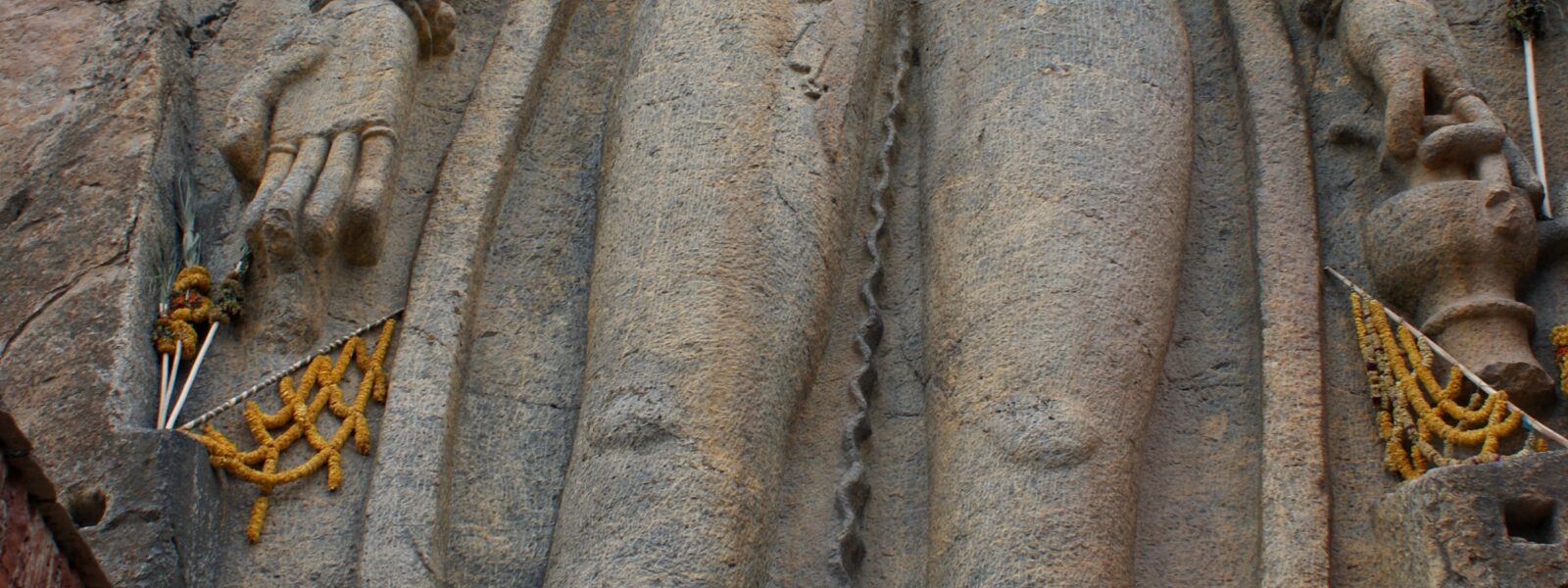Discover the Ancient Rock Carving Statues of Ladakh: A Hidden Gem of Himalayan Heritage
Ladakh, often referred to as the “Land of High Passes,” is renowned for its stunning landscapes, serene Buddhist monasteries, and rich cultural history. While its dramatic natural beauty attracts adventurers and spiritual seekers, Ladakh’s lesser-known rock carving statues hold equally profound cultural and historical significance. These ancient stone sculptures, carved into the rugged Himalayan landscape, serve as silent witnesses to centuries of Buddhist art and Himalayan heritage.
In this blog, we delve deep into the world of Ladakh’s ancient rock carvings, exploring their historical context, cultural significance, and the must-visit locations where these treasures can be found.
Introduction to Ladakh’s Ancient Rock Carvings
The Historical Importance of Rock Carvings in Ladakh
Ladakh’s rock carving statues are a testament to the region’s rich artistic and spiritual past, dating back to pre-Tibetan and early Buddhist eras. These carvings reflect the Buddhist influence on Ladakh’s art, with many sculptures depicting Buddhist deities and motifs. Unlike the more commonly known monasteries and stupas of Ladakh, these stone sculptures are relatively lesser-known and often located in remote areas.
These carvings represent not only the spiritual beliefs of the time but also the artistic mastery of the craftsmen who used basic tools to create intricate reliefs and statues. By studying these carvings, historians have gained insights into the ancient cultural exchanges between Ladakh, Tibet, and the broader Himalayan region.
Overview of Ladakh’s Archaeological Treasures
The ancient rock carvings in Ladakh are spread across various regions, from the Kargil district to the Zanskar Valley and the Nubra Valley. Each site offers a unique window into the artistic and religious traditions that have flourished in Ladakh for centuries. The sculptures are often located near ancient trade routes, monasteries, or sacred sites, suggesting their significance as spiritual landmarks for travelers and pilgrims.
The Historical and Cultural Significance of Ladakh’s Rock Carving Statues
Exploring the Origins of Ladakh’s Rock Art
Ladakh’s rock carving statues date back to the early Buddhist period, around the 7th century, when Buddhism was firmly taking root in the region. Prior to the spread of Tibetan Buddhism, Ladakh was influenced by various other religious and cultural movements, including Bön and early forms of Indian Buddhism. The rock art in Ladakh reflects these diverse influences.
The Dras rock sculpture is one of the oldest known examples, showcasing a large statue of Maitreya Buddha, the Buddha of the future. This ancient carving demonstrates the region’s early connection to Buddhist philosophy and serves as evidence of Ladakh’s deep spiritual history.
The Role of Buddhism in Ladakh’s Stone Sculptures
As Buddhism spread through Ladakh, the art of stone carving became an important way to represent Buddhist deities and teachings. These rock sculptures are not just artistic masterpieces; they are also sacred objects meant to inspire spiritual contemplation and devotion.
One of the most famous rock carvings in Ladakh is the statue in Kartse Kargil, which depicts a large figure of the Buddha carved into the face of a mountain. The Kartse Buddha is notable for its large size and the intricacy of its design, representing the Mahayana Buddhist tradition that emphasizes the compassion and wisdom of the Buddha.
Notable Sites for Viewing Rock Carving Statues in Ladakh
Top Places to See Ancient Rock Carvings in Ladakh
Ladakh is home to numerous ancient rock carving sites, many of which are located in relatively remote areas. For travelers interested in history and culture, these sites provide a rare glimpse into the artistic traditions of ancient Ladakh. Below are some of the most significant sites for viewing these rock carvings:
– The Dras Rock Sculpture: Located in the Dras Valley, this towering Maitreya Buddha statue is an impressive example of ancient Buddhist stone art. The serene expression and detailed robes reflect the mastery of Ladakh’s early sculptors.
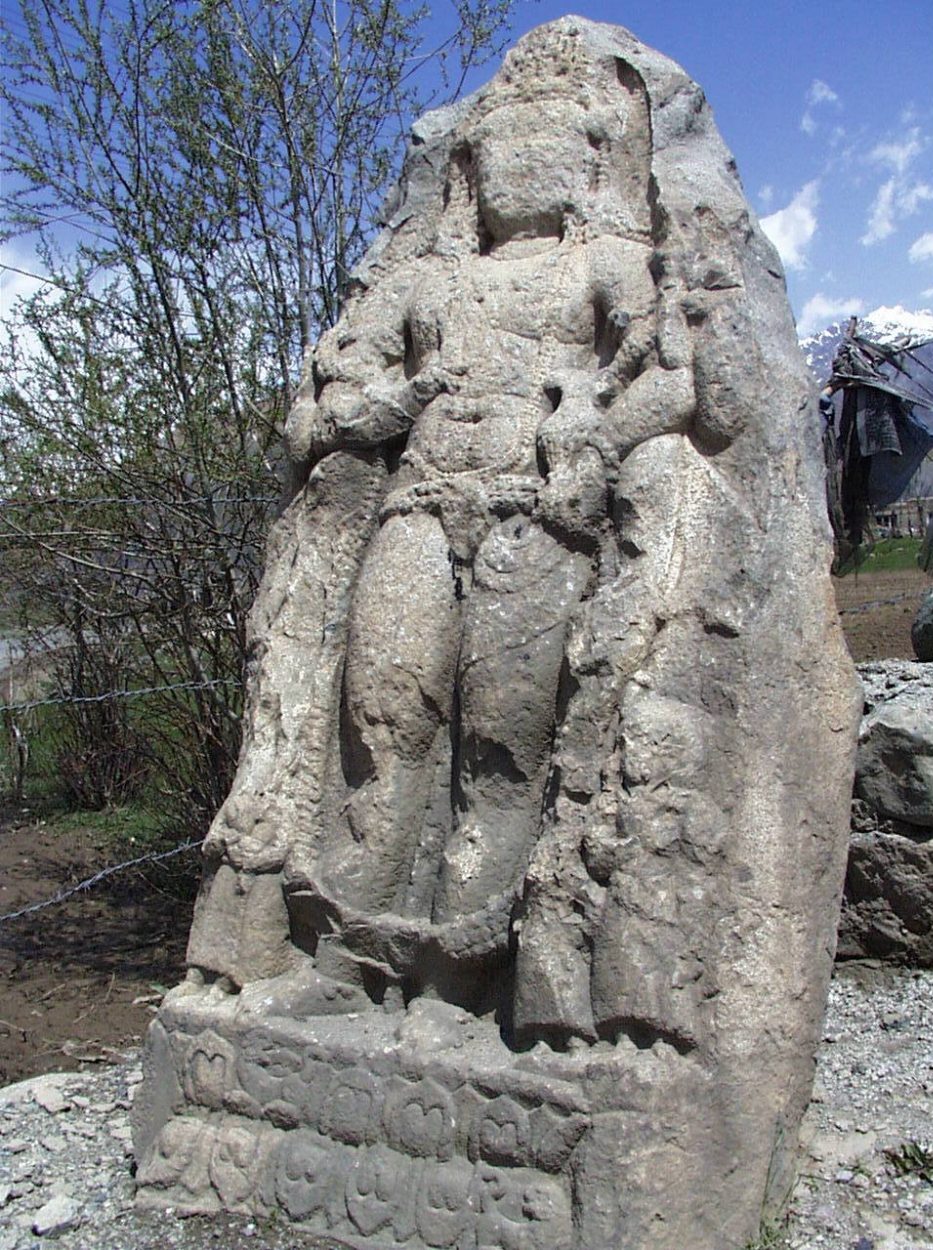
– Kartse Buddha in Kargil: This monumental statue, carved into a cliff face in the Kartse region of Kargil, stands as one of the largest rock sculptures in the region. It is believed to date back to the 7th or 8th century, symbolizing Ladakh’s connection to the broader Buddhist world.
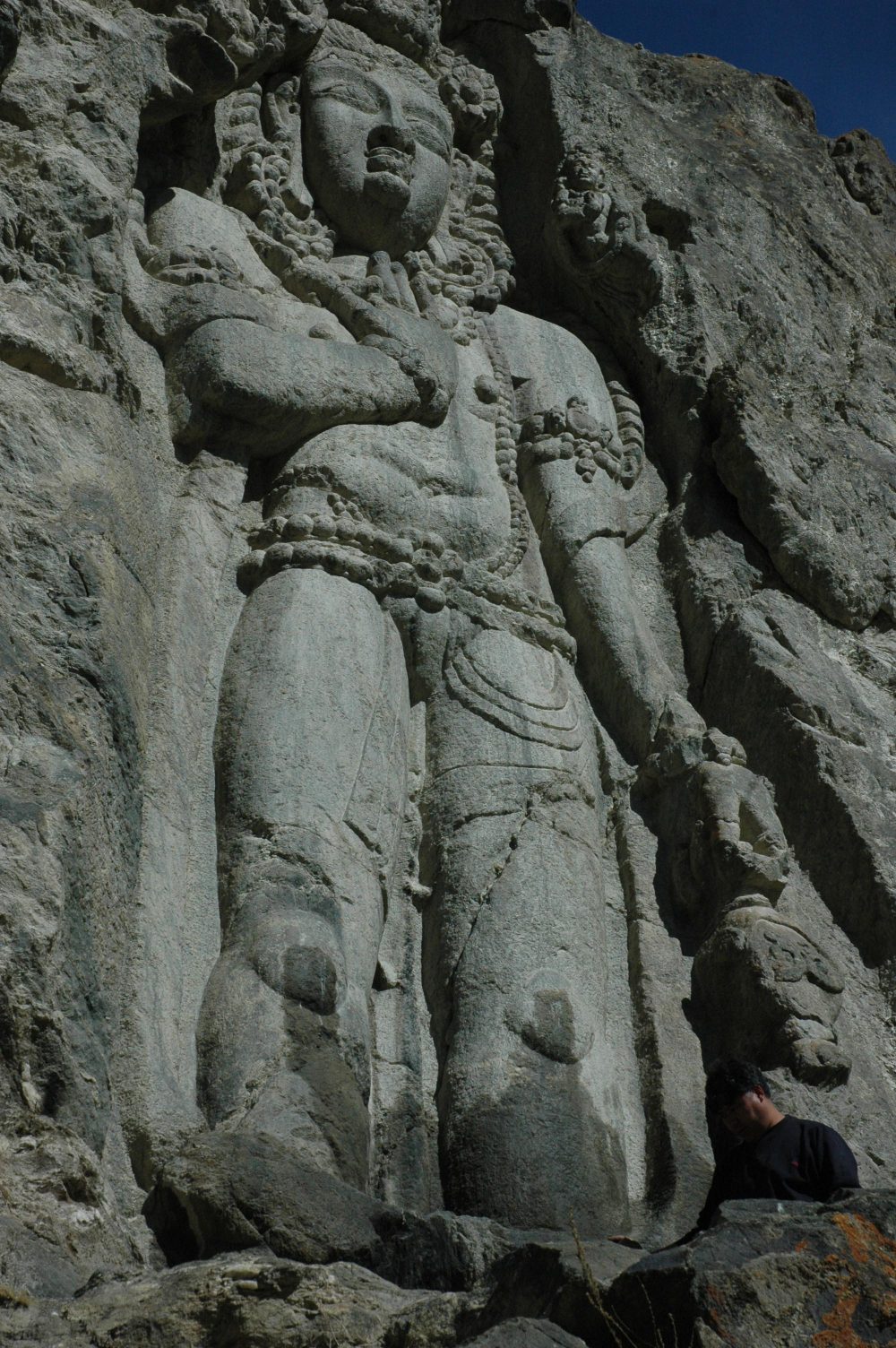
– Soth Valley Sculptures: The Soth valley in Kargil features several rock carvings that depict Buddhist figures. The carvings here are lesser-known but are considered important due to their fine detailing and the remote location, which has helped preserve them over the centuries.
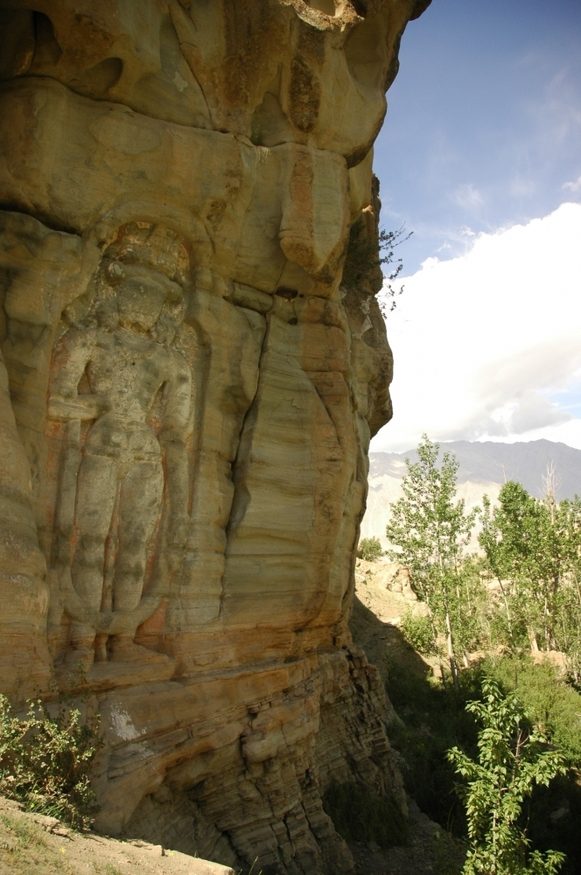
– Sani Rock Statue in Zanskar: Near the famous Sani Monastery in Zanskar, visitors can find a well-preserved stone carving of the Maitreya Buddha. This site is not only significant for its artistry but also for its proximity to one of the oldest monasteries in Ladakh.
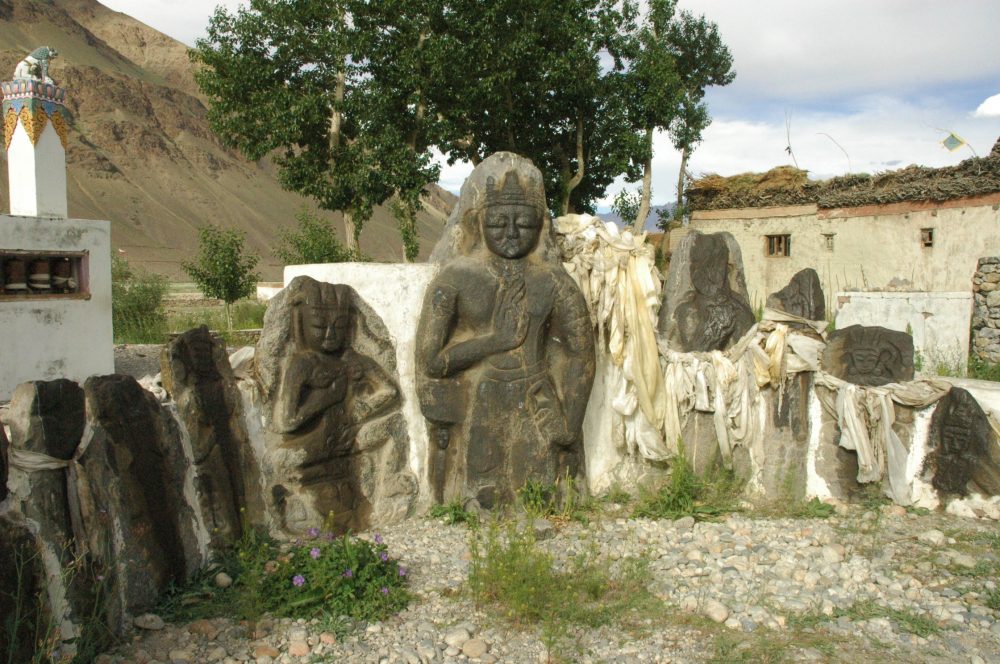
Hidden Gems: Lesser-Known Rock Carving Sites
For those willing to venture off the beaten path, Ladakh offers several lesser-known rock carving sites that provide a more intimate glimpse into the region’s Buddhist heritage:
– Digar Village in Nubra Valley: The rock carvings at Digar village are less frequented by tourists, making them a peaceful and reflective stop for travelers exploring the Nubra Valley. These carvings are thought to be older than many of the better-known sites, making them important for understanding Ladakh’s early Buddhist traditions.
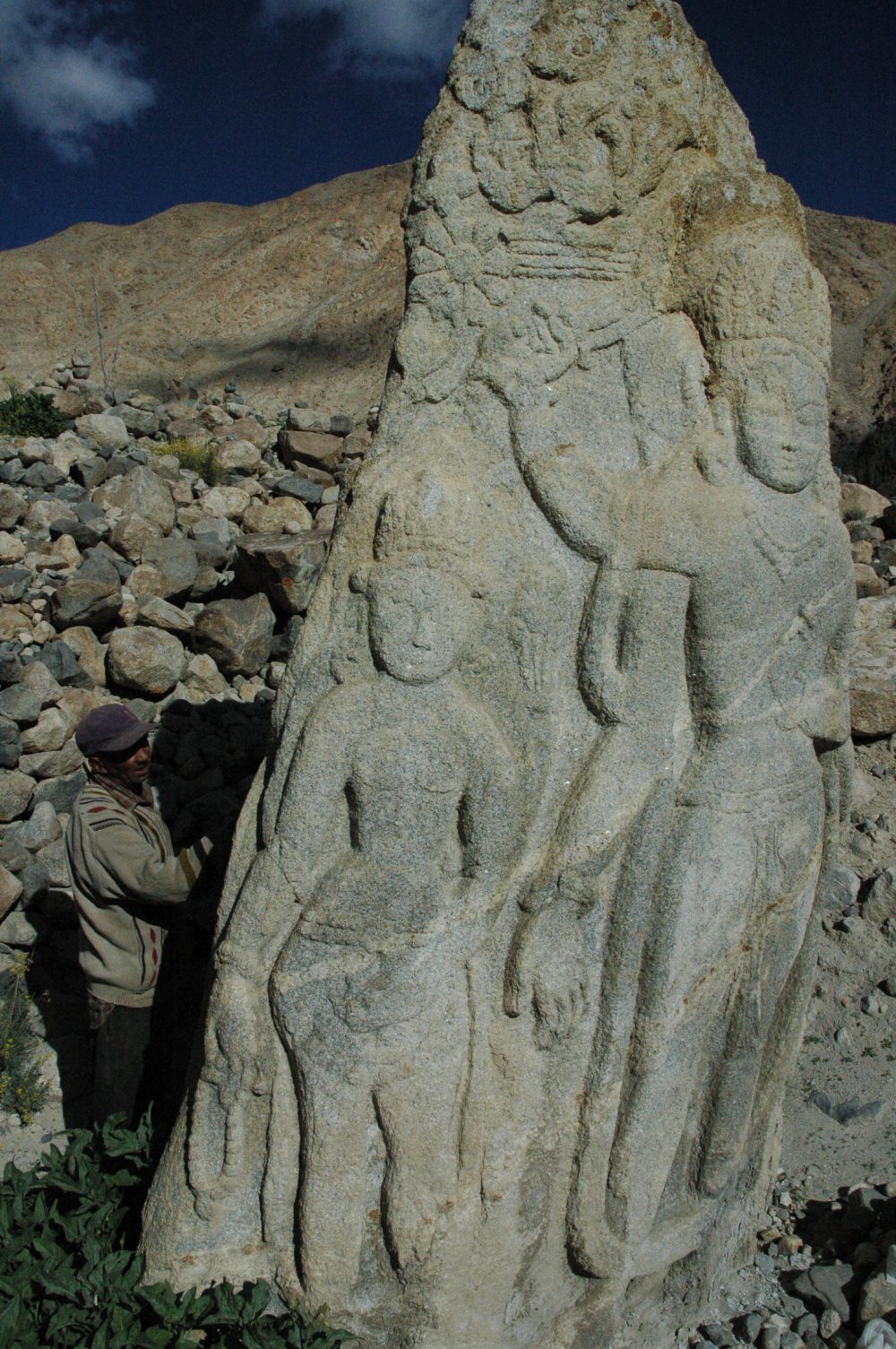
– Changspa Rock Statue in Leh and next to the Leh-pa house of Skara hamlet in Leh, this rock statue is a hidden gem. The sculpture is believed to represent a Bodhisattva and offers a unique contrast to the more famous religious landmarks of Leh.
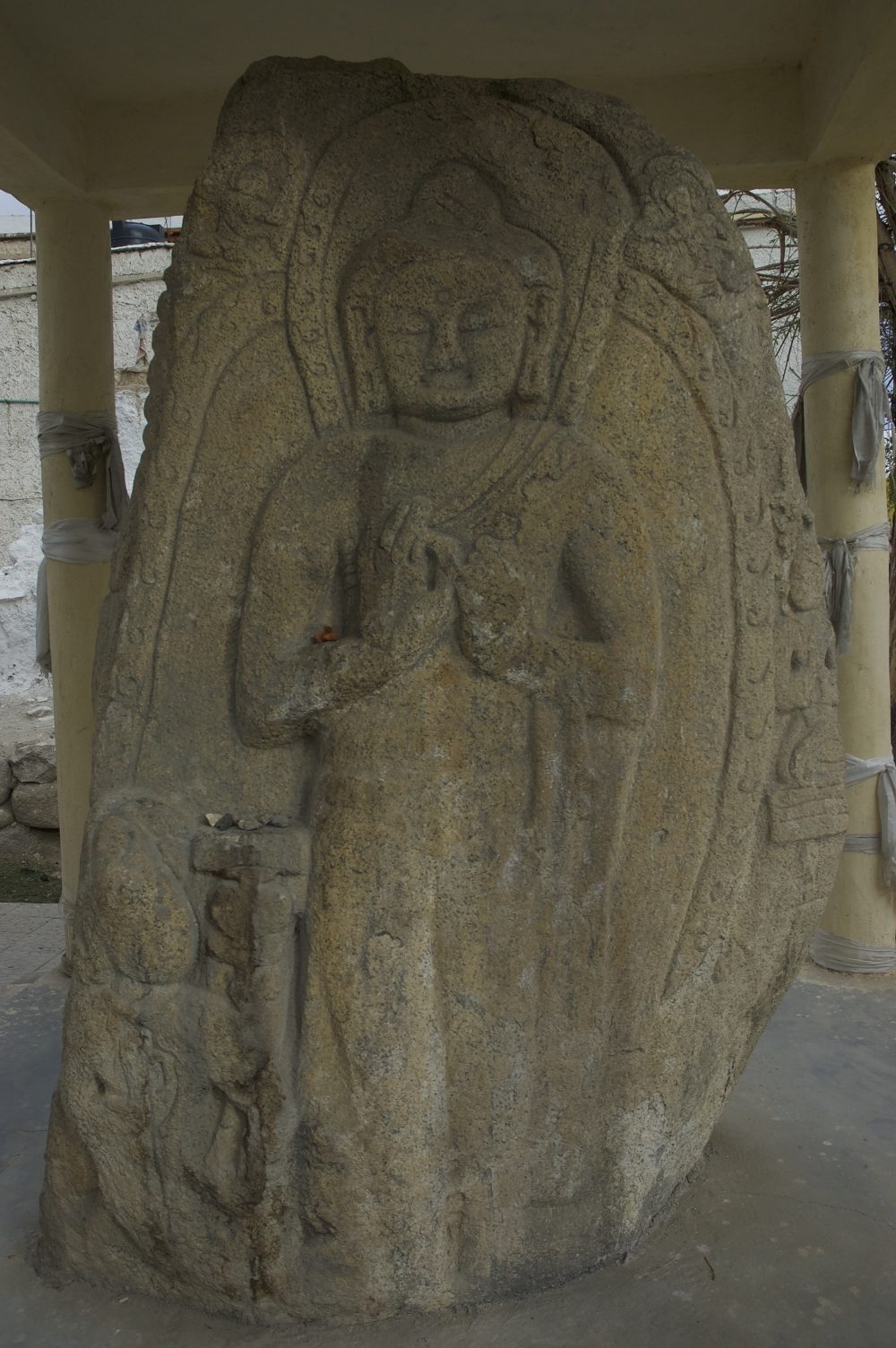
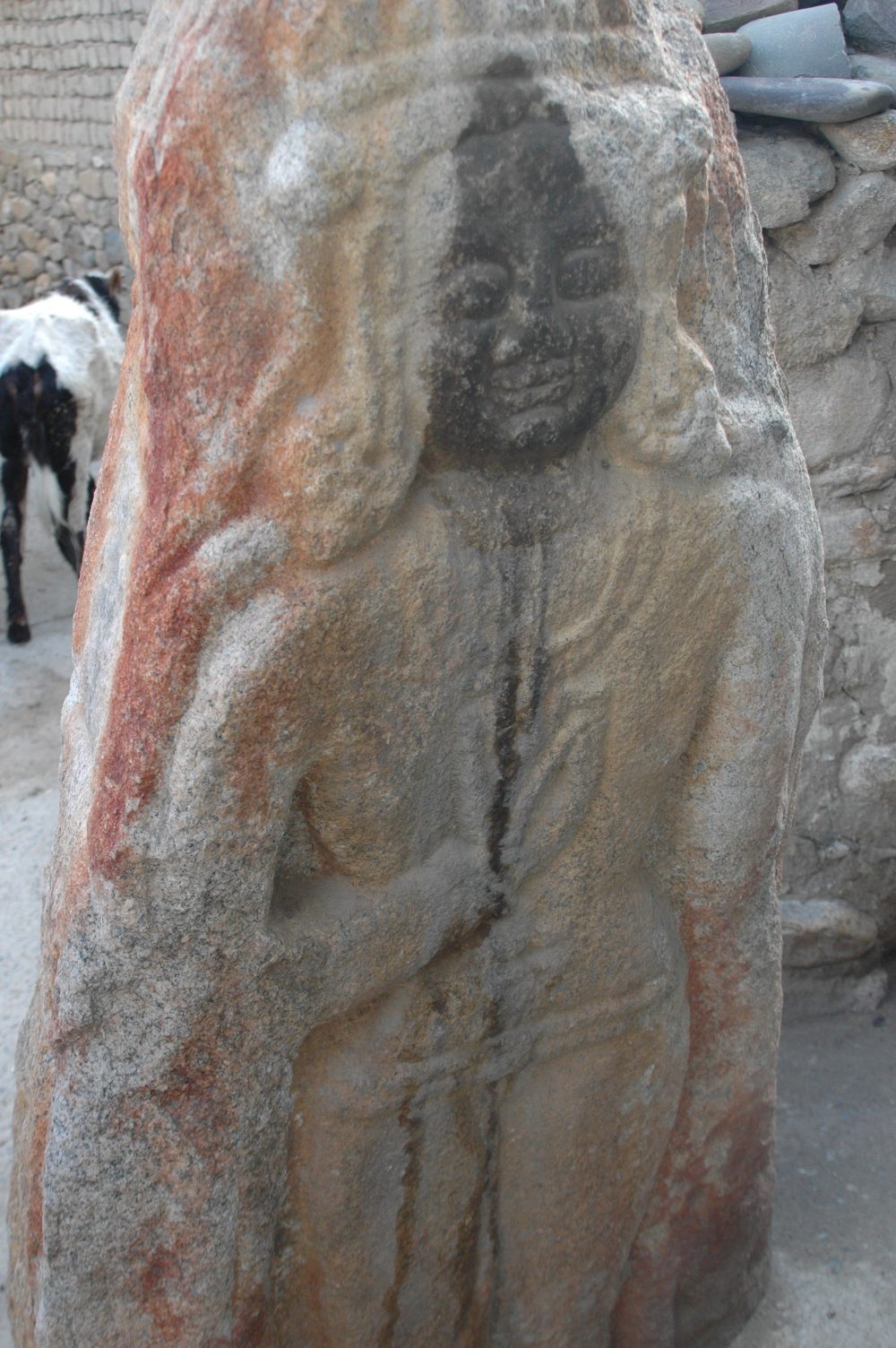
The Art and Craftsmanship of Ladakh’s Rock Carving Statues
Understanding the Artistic Techniques of Ancient Sculptors
The artistic techniques used in creating Ladakh’s rock carvings were highly sophisticated, considering the rudimentary tools available at the time. Early sculptors relied on chisels, hammers, and natural dyes to bring the stone statues to life. The Dras rock sculpture, for instance, showcases meticulous attention to detail, with lifelike folds in the robes and intricate facial expressions.
The Symbolism in Ladakh’s Stone Carvings
Symbolism plays a crucial role in Buddhist rock carvings. Many of the rock sculptures in Ladakh depict the Buddha or Bodhisattvas, each representing different aspects of Buddhist teachings such as compassion, wisdom, or protection. For example, the Kartse Buddha represents the Maitreya, symbolizing hope for a future enlightened world.
Cultural Significance and Preservation Efforts
Why Ladakh’s Rock Carvings are Culturally Important
The rock carvings in Ladakh are not only valuable as works of art but also as cultural markers of Ladakh’s ancient Buddhist heritage. These carvings help historians trace the evolution of Buddhist art and the spread of Buddhism across the Himalayas. For the local population, these rock sculptures are sacred, often serving as places of worship and meditation.
Current Preservation Efforts and Challenges
Preserving these ancient rock carvings is no easy task. The harsh climate of the Himalayas, coupled with increasing tourism, poses a threat to the long-term survival of these statues. Local authorities, in collaboration with organizations like the Archaeological Survey of India, are working to protect and conserve these heritage sites. Efforts include limiting access to certain areas and using modern technology to repair and stabilize the carvings.
Exploring Ladakh’s Rock Carvings as a Tourist
How to Visit Ladakh’s Ancient Rock Carvings
For travelers interested in history, a visit to Ladakh’s rock carving statues offers an unforgettable experience. The best way to explore these sites is by hiring local guides who are familiar with the region’s archaeological treasures. Many of these ancient sculptures are located in remote valleys, so it’s essential to plan your trip carefully, considering transportation and weather conditions.
The Best Time to Visit Ladakh’s Historical Sites
The ideal time to visit Ladakh’s historical sites is during the summer months, from May to September, when the roads are open and the weather is favorable. Winter, while beautiful, can make travel to these remote areas difficult due to snow and freezing temperatures.
Conclusion: Preserving Ladakh’s Heritage for Future Generations
The Future of Ladakh’s Ancient Rock Carvings
The future of Ladakh’s ancient rock carvings depends on both preservation efforts and responsible tourism. As more people discover the beauty of these cultural monuments, it’s essential that visitors respect the sacred nature of the sites and contribute to their conservation.
Embracing Ladakh’s Ancient Heritage
Ladakh’s rock carving statues are more than just artistic masterpieces; they are a vital part of the region’s cultural legacy. By visiting these sites, we can connect with Ladakh’s ancient past and ensure that its heritage is preserved for future generations.
Q&A About Ladakh’s Ancient Rock Carvings
Q1: What are the most famous rock carving statues in Ladakh?
Some of the most famous carvings include the Dras rock sculpture, the Kartse Buddha, and the statues in Sani, Zanskar.
Q2: Where can I find ancient rock carvings in Ladakh?
Key locations include Dras, Kartse in Kargil, Soth Valley, and Digar village in Nubra Valley.
Q3: Why are Ladakh’s rock carvings culturally significant?
These carvings reflect the spread of Buddhism and the region’s historical connections to the broader Himalayan and Tibetan world.
Q4: How can I visit Ladakh’s rock carving statues?
Hire local guides for a well-organized trip, especially to remote areas like Zanskar and Nubra Valley.
Q5: What is the best time of year to visit Ladakh’s historical sites?
Summer, from May to September, is the best time to visit, as most roads are accessible during this period.
Q6: How are Ladakh’s ancient rock carvings being preserved?
Local authorities and organizations are working on conservation efforts, including limiting access and stabilizing the carvings.

